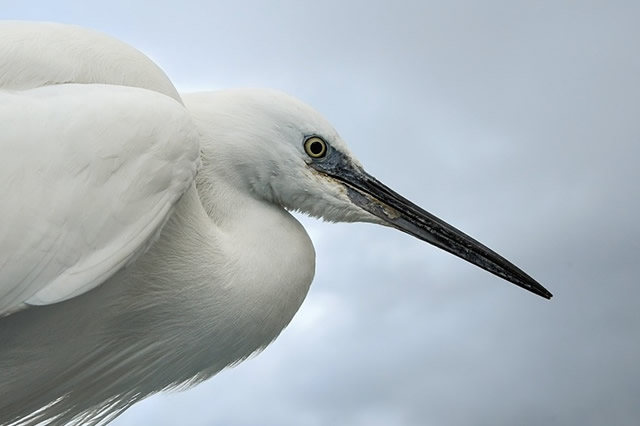Egretta garzetta
IUCN
LCBasic Information
Scientific classification
- name:Egretta garzetta
- Scientific Name:Egretta garzetta,Great Egret, Middle Egret, Little Egret, Yellow-billed Egret
- Outline:Wading birds
- Family:Ciconiiformes Ardeidae Egretta
Vital signs
- length:46-65cm
- Weight:320-650g
- lifetime:
Feature
Distribution and Habitat
China has 20 species of herons, among which the Egret is the most precious. There is an Egret Nature Reserve in Sanduoqiao Village, Baishiyi Town, Jiulongpo District, Chongqing, with more than 20,000 egrets of various kinds. Xiamen has 10 types of herons, accounting for 50% of the total number of herons in China, including 5 species of Egret, which reflects that Xiamen's geographical location and wetland environment are typical and representative in the distribution of heron resources. In recent years, the number of herons in Xiamen has reached 30,000 per year. According to international standards, the intertidal zone and the lake surface of the Xiamen sea area are important wetlands for herons in China and the world. Egrets are also distributed in Zaolin Bay, Yizheng City, Jiangsu Province. After the Three Gorges Dam was filled with water, it became an important habitat for water birds such as egrets, which has caused major changes in the distribution of egrets in China. It has b
Appearance
The egret is 46-65cm long and weighs 320-650g. It is large and slender, with a black beak and legs, yellow toes, pure white breeding feathers, slender ornamental feathers on the nape of the neck, and hooded feathers on the back and chest. The body is light and conducive to flying. In summer plumage, the adult bird has two narrow and soft spear-shaped feathers on the occipital, and hooded feathers on the shoulders and chest. In winter plumage, all the hooded feathers will fall off. The iris is yellow, the exposed part of the face is yellow-green, the beak is black, the beak cleft and the light corners at the base of the lower beak are yellow, the shanks and feet are black, and the toes are yellow-green.
Details
Egrets are a general term for medium-sized wading birds of the genus Egretta. There are 13 species of birds in the genus Egretta, including the great egret, the middle egret, the little egret and the yellow-billed egret, all of which have all-white feathers and are commonly called "egrets". The yellow-billed egret is a national second-level key protected animal and an internationally endangered species. Egrets live in coastal islands, coasts, bays, estuaries and rivers and lakes near the coast. They mainly feed on various small fish, and also eat animal food such as shrimps, crabs, tadpoles and aquatic insects.

The feathers of egrets are highly valued, and their feathers are mostly white. They have long decorative nuptial feathers during the breeding season. Their habits are roughly similar to other herons, but some species have courtship performances, including showing off their feathers. They nest in large groups and have no defense capabilities. As a result, they are on the verge of extinction due to human overhunting. They are wading birds that prey on small fish, amphibians, reptiles, mammals and crustaceans in shallow water. They build large, messy nests on trees or shrubs, or on the ground.
It mainly feeds on various small fishes, and also eats animal food such as shrimps, crabs, tadpoles and aquatic insects. It usually walks along the river, salt fields or paddy fields while pecking. Its long beak, long neck and long legs are very convenient for preying on animals in the water. When hunting, it gently wades forward, its eyes constantly looking at the small animals moving in the water, and then suddenly pecks the water with its long beak, pecking the food accurately into its mouth. Sometimes it often stands by the water, waiting for an opportunity to prey on passing fish.
The breeding season of egrets is from May to July every year. They nest on rocks near the coast and on cliffs on the coast or between short branches. They like to nest together in groups. Someone once found 14 nests on the top of a cliff of only about 20 square meters, and there are 11 nests on the top of an adjacent cliff of only more than 10 square meters. The distance between each nest is only 14-76 cm. The shape of the nest is shallow saucer-shaped, with a relatively simple structure, mainly composed of dead grass stems and grass leaves. The nest is built on a short tree, and the highest height from the ground does not exceed 1 meter. There are also nests built in the grass under the short tree. Each nest lays 2-4 eggs, which are oval in shape and light blue in color. The incubation period is 24-26 days.








